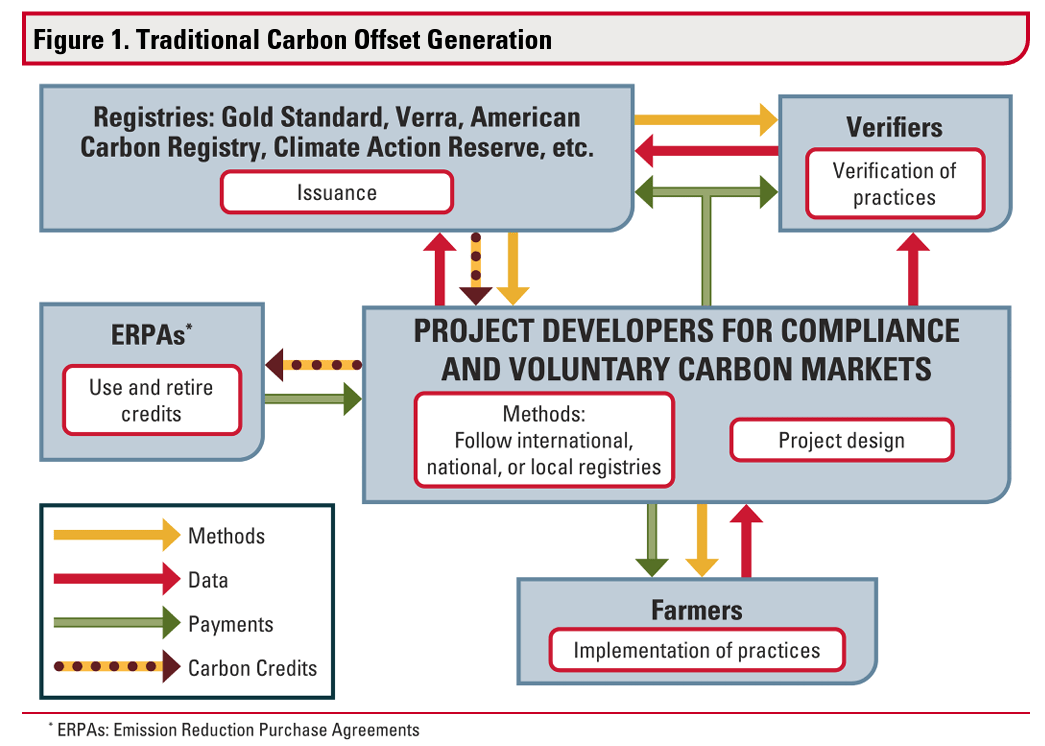How Do Data Flow Through Agricultural Carbon Markets?
This article was adapted from “How Do Data and Payments Flow Through Ag Carbon Programs?” by Alejandro Plastina, first published by Ag Decision Maker on April 19, 2022.
The short answer: Farmers and land managers supply data to project developers, who then take that information and pass it along to verifiers and registries. For the land manager—the farmer, forester, or livestock owner—those data translate to potential payments for practices implemented on the land.
- For a quick overview of the players in the carbon market ecosystem and the types of markets, check out this article.

Figure 1 shows the movement of methods, data, payments, and carbon credits during traditional carbon offset generation. Republished with permission of Alejandro Plastina from “How do Data and Payments Flow Through Ag Carbon Programs?”
Break it down: In a traditional carbon offset program, farm production data are collected by project developers—the people who coordinate the practice changes that help sequester carbon—who ensure that they have the right information to:
- Determine baseline soil carbon levels;
- Document baseline on-farm emissions;
- Track practice changes like reducing tillage, adding cover crops, or implementing precision nutrient management; and
- Measure and/or model changes in soil carbon as a result of on-farm practices.
In general, here’s how data move through a traditional voluntary carbon offset market:
- A carbon project developer works with a farmer to collect data about the baseline practices listed above.
- Farmers provide data that project developers use according to international, national, or local registries.
- The project developer is also responsible for designing the project that the land manager will implement.
- Once the project developer has collected data from the farmer, they provide that information to verifiers, who are either third-party groups or within the project team.
- The verifiers ensure that the practices outlined in the data have actually been completed, and that measured and or/modeled changes in soil carbon are consistent with the approved registry protocol.
- The project developer and verifiers will also pass the project data along to registries.
- Registries are responsible for issuing carbon credits to certify that there has, indeed, been carbon reduced or sequestered based on the practices provided.
- A registry issues a serial number for that carbon offset to the project developer, the farmer, or the investor financing the project. The serial number, usually referred to as a carbon credit, can be directly used to offset emissions or sold.
- However, buyers in regulated industries will only be interested in top-quality offsets. Check out this article to learn what makes a quality carbon credit.
Taken together, the flow of data through the traditional carbon offset market provides the framework to help project developers, verifiers, and registries to ensure that the carbon offsets generated are, indeed, sequestering carbon.
Photo by Tracy Robillard, NRCS.








